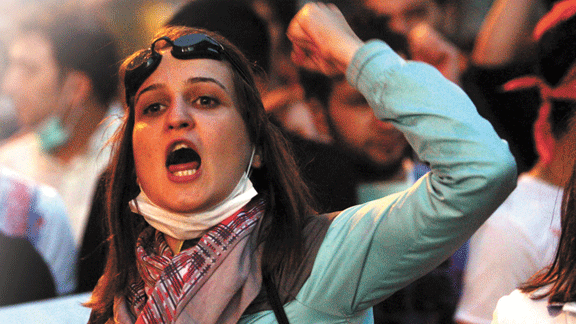The origins of May Day

“The brilliant basic idea of May Day”, enthused Rosa Luxemburg on its eve in 1913, “is the autonomous, immediate stepping forward of the proletarian masses”. Written a quarter of a century after the occasion was born and one year before the outbreak of war, Luxemburg’s words were an insistence on the revolutionary character of the day.
“The idea of May Day”, she continued, “is the idea of resolute mass actions as a manifestation of international unity, and as a means of struggle for peace and for socialism.”
May Day, the first day in May, is marked as the day of the international working class – in 1889 the Paris congress of the Second International decreed it so.
But it was in Chicago, five years earlier, at a meeting of delegates to the Federation of Organized Trades and Labor Unions (later known as the American Federation of Labor) that the workers’ day was conceived. There, a decision was made which led to a great strike wave for a shorter working day and to the world’s first May Day marches.
Eight-hour day
The demand that each whole day allow “eight hours for work, eight hours for rest and eight hours for what we will” was then a platform of the international labour movement.
In the US, legislative advances had been made in the cause. As early as 1867, some states adopted eight-hour laws, and in 1868 Congress passed a law granting the eight-hour day to federal government workers. But the laws proved a dead letter and changed little for most workers, for whom 12, 14 or 16-hour days remained typical.
In 1882 a union committee was delegated to meet the president, Chester Arthur, to enquire about the status of the federal eight-hour law – then on the books for more than a decade. The president told them that there was “no power on earth” that could compel him to enforce the law.
Years of political wrangling had come to nothing. The shorter day would not be delivered to workers by legislative decree. “If you want the eight-hour law, make it yourself”, declared carpenters’ union leader P.J. McGuire.
On 7 October 1884, by a vote of 23 to 2, delegates to a Chicago meeting of the Federation voted for the eight-hour day. It resolved that “eight hours shall constitute a legal day’s labor from and after May 1, 1886”.
Though a deadline was then set for the establishment of the eight-hour day, the resolution said nothing about the means by which the enactment would be enforced. Without the consent of employers, it was self-evident that the shorter day would be won only through direct confrontations in the factories, mines and mills – and on the streets.
Test of power
“[S]pring was coming on. Birds and blue hills beckoned”, recalled socialist Oscar Ameringer of the time. “And so when agitators … invaded our sweatshop preaching the divine message of less work for more pay, I became theirs.”
The idea of a general strike on 1 May was popular. “There is eight-hour agitation everywhere”, a labour newspaper cheered in April 1886.
“Thousands of workers, skilled and unskilled, men and women, Negro and white, native and immigrant, organized and unorganized, were drawn into the struggle for the shorter working day”, wrote labour historian Philip Foner.
The insurgent mood was driven by the rank and file. Strikes broke out ahead of time. By 1 May tens of thousands across the US had gained an eight-hour or shorter day. But the national movement culminated in mass strikes and street marches on the first day in May. It’s estimated that, nationally, 500,000 were involved.
The strike centre was Chicago. “The police department have ceased in the attempt to smooth over the fears of the last few weeks regarding the labor movement. Their sole idea now is that … there will be a great deal of trouble”, reported the Illinois State Register on 1 May. That day, 40,000 struck, and double the number took part in protests.
Striking workers marched from plant to plant to force their closure. Historian Jeremy Brechter describes the scene outside a Chicago steel mill: “When a committee of the crowd presented the mill officials’ explanation [for not closing] that the workers were paid by the ton not by the hour and asked if they were satisfied with it, the crowd yelled back ‛Eight hours!’ They felt it was no longer a matter between individual workers and employers, but rather a test of power between workers and employers as a whole.”
A spark
It was soon clear that the bosses and the state viewed the matter in the same way. In Chicago, the ruling class retaliated quickly. A bombing, orchestrated by police, at a small protest in Haymarket Square led to the execution of four militant workers’ leaders. Their show trial – a theatrical prelude to murder – was the centrepiece of a wave of reactionary hysteria cultivated by the bosses, media and the government. Many of the gains won by workers on the first May Day were lost.
Addressing the court that would condemn him to hang, anarchist labour leader August Spies foretold a workers’ movement that would not stop while its aims remained unfulfilled. “If you think that by hanging us you can stamp out the labor movement … then hang us. Here you will tread upon a spark, but there and there behind you, and everywhere, flames blaze up.”
It was four years before workers moved again on May Day. The next time, on 1 May 1890, it was the international working class that marked its day for the first time. Then, and each year since, May Day is the expression of the political demands of the working class as a whole.